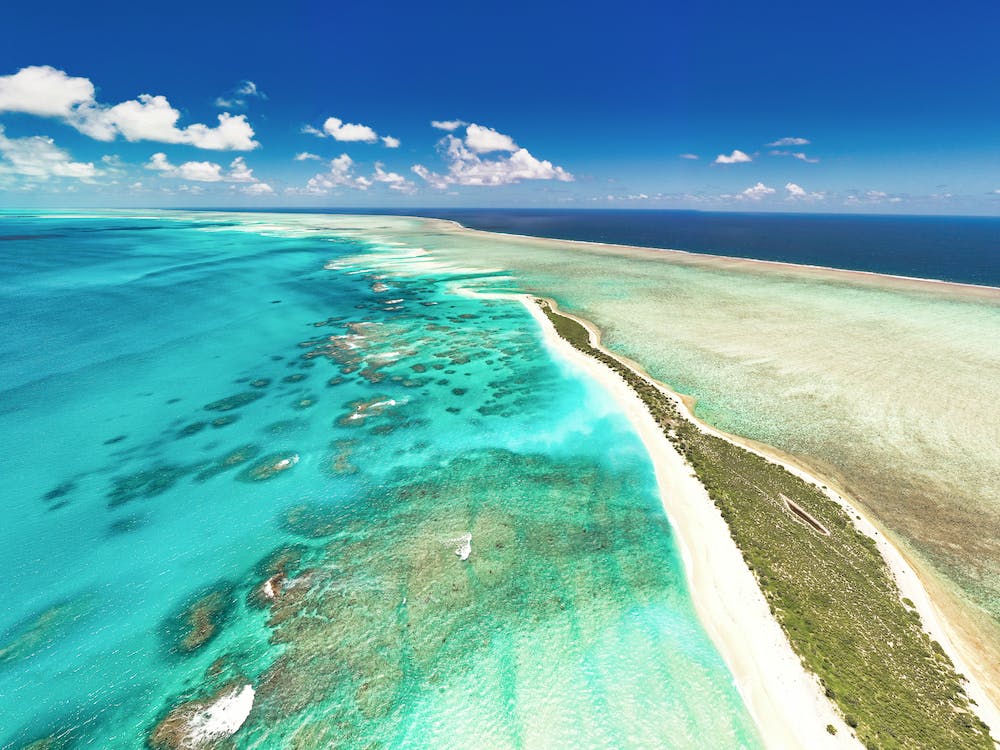History of the island of Saint-Barthélemy
The island of Saint-Barthélemy, located in the Caribbean, is an incredibly interesting place with a long and fascinating history. From its discovery by Christopher Columbus in 1493 to its present-day status as a popular tourist destination, Saint-Barthélemy has a unique story to tell. In this blog article, we will explore the history of this beautiful island, including its colonization by the French, the influx of immigrants, and the events that led to its independence in 2007. Join us as we take a journey through the captivating tale of Saint-Barthélemy!

Location of the Island of Saint-Barthélemy
The Island of Saint-Barthélemy, also known simply as Saint-Barth, is a Caribbean island lawlessly located in the northern Leeward Islands in the Lesser Antilles archipelago. It is approximately 8 square miles in size and has a population of approximately 10,000 people. The Island of Saint-Barthélemy is geographically situated in the Caribbean Sea, directly north of Puerto Rico, east of St. Marten, and south of the US Virgin Islands. The Island of Saint-Barthélemy is an overseas collectivity of the French Republic, meaning that while it is not an official part of France, it is a collective of people with a shared history and language. This close relationship between Saint-Barthélemy and France gives the island a distinct cultural identity, with many traditional customs, festivals, and cuisine. The Island of Saint-Barthélemy has a tropical climate that is moderated by the constant trade winds blowing in from the east and northeast, making it a popular destination year-round for beach goers and water sport enthusiasts alike. The Island of Saint-Barthélemy is renowned for its beauty and serenity, making it an ideal destination for a peaceful vacation away from the hustle and bustle of everyday life.
Early History (before colonization)
Very little is known about the early history of the Caribbean island of Saint-Barthélemy before European colonization. It is thought that the first inhabitants of the island were Arawak Indians, who were likely driven out by the Carib people, who arrived at Saint-Barthélemy in the 13th century. The name of the island is associated with the saint Bartholomew the Apostle, and it likely originated with the Caribs.
Archaeological evidence suggests that the Caribs created an agricultural society on the island, growing crops such as yams and dashed. They were also skilled in fishing and many of their settlements were built close to the sea. The island was an important hub for trade between the Caribs and other Amerindian settlements, with artifacts traded from as far away as South America found on the island.
The arrival of Europeans on the island marked the end of the indigenous culture, with the island becoming a trading post for the colonial powers of France and Sweden. As the French gained control of the island in 1784, the Carib culture faded away, replaced with plantation agriculture, a slave economy and French culture. The history of the island was forever changed.
French Colonization (1784)
In 1784, Saint-Barthélemy was colonized by the French, as part of a purchase agreement between the King of France and Sweden, who had briefly held the island. The French colonial period began with the arrival of the new governor, Baron de Necker, who was instructed to organize the island and prepare it for development. The governor established a government system and introduced taxes, divided the territory into five municipalities, and provided social and health services. He also created a judiciary system, and appointed a mayor and other officials to manage the island. Despite their efforts, the French were unable to make the island entirely self-sufficient, so they imported food and other supplies from France. Additionally, they built a number of defensive walls, a fort, and a military barracks in order to protect the island from outside attacks. Over the years, the French continued to improve living conditions on the island, introducing coconuts and other crops, and developing trade relations. As the centuries passed, Saint-Barthélemy transformed from an unassuming island to the popular tourist destination it is today.
Swedish Colonization (1784-1878)
The island of Saint-Barthélemy was subject to Swedish colonization between 1784 and 1878. To secure control of the island, the Swedish crown issued a charter in 1784 that set out the rights and obligations of the settlers, granting them substantial autonomy. The new settlers were mainly French, from the neighboring islands of Saint Martin and Guadeloupe, bringing with them the Roman Catholic religion and a variety of foreign languages. The colonists developed sugarcane plantations and increased fishing and animal husbandry. They also began trading with nearby islands, selling produce such as grains, rum and tobacco. With Swedish support and guidance, the island flourished, and the population grew rapidly.
The Swedes built a church and a hospital, gave land to the settlers, created roads and regulated commerce. They also built a small fort to protect the harbor. During this era, Saint-Barthélemy was known as 'Little Sweden'. Throughout the colonial period, the economy remained based on the production of sugar, rum, molasses and tobacco. During the 19th century, the island also served as a stopover for vessels trading between Europe and the West Indies.
Swedish rule ended with the sale of Saint-Barthélemy to France in 1878. During the next few decades, the economy was partially based on the export of salt from the Salinas and on the production of bananas, guavas and other tropical fruits. Although the island remained isolated, it prospered and became increasingly developed. The island of Saint-Barthélemy, previously known as a sleepy backwater, has since become a luxurious holiday destination for the rich and famous.